With Air Canada set to take over the Aeroplan program next June, the future of the Aeroplan Mini-RTW – a glorious redemption sweet spot which takes advantage of Aeroplan’s generous stopover policies to build complex round-the-world trips – is shrouded in uncertainty.
Conventional wisdom encourages everyone to book their Mini-RTWs as soon as possible before the fateful date of June 29, 2020, because it may be their last opportunity to do so. But before you rush to the Aeroplan search engine, take a moment to consider if the Aeroplan Mini-RTW is the right fit for you. It might maximize the value of your miles on paper, sure, but does it maximize the value that accrues to you specifically?
Indeed, whenever I embark on an ambitious Aeroplan Mini-RTW journey and write about it here on the blog, there are always a few voices in the comments who enjoy following along, but lament that they probably wouldn’t choose to book one for themselves. Let’s take a look at why they might feel this way…
Mini-RTWs Require Careful Advance Planning
One significant difficulty with the Aeroplan Mini-RTW is that they’re ideal for travellers who can plan their trips 9-12 months in advance, whereas they tend to be more challenging for those who don’t enjoy such a luxury.
Most of the “good” award availability – long, comfortable flights like EVA Air business class or ANA business class – tends to get snapped up within that timeframe, particularly if you’re looking for premium award space and if you’re travelling over peak periods. When you get to about six months before the date of departure, you’re left with rather slim pickings.

The problem, of course, is that if you’re working a full-time job and need to ask for time off, you might be faced with some uncertainty as to whether or not you’d be allowed to take time off in 9-12 months’ time. That goes double if you’re travelling as a couple or family, and your partner is in the same situation.
In fact, this is the exact situation I faced two years ago when booking my first-ever Mini-RTW. At the time, I was working at a corporate job and only had three weeks’ vacation time to play with.
Realistically, you’d need at least two weeks to pull off a Mini-RTW with a meaningful amount of time at each stop (and even, then it’s going to be quite a whirlwind trip). I knew that if I left on the Friday evening and got back on the Sunday two weeks later, I’d have 16 days to play with – hence, my “Around the World in 16 Days” trip was born.

The problem was that I was relatively new to my job at that point, and I felt sheepish about asking for vacation nine months in advance. But at the same time, I had located the perfect award availability for the trip, and was worried that it would get snapped up by someone else if I hesitated too long.
So what did I do? I went ahead and booked the trip anyway, knowing that I could always pay the change fee later if my boss didn’t allow me to take those two weeks off. Thankfully, that particular scenario did not play out, and everything fell into place exactly as I had intended.
I realize this is a high-risk strategy that might not be suitable for everyone, but it could be a solution if you’d like to embark on a Mini-RTW adventure but feel limited by an unpredictable work schedule.
In the end, thanks to carefully planning the trip in advance, I was able to depart for Europe on the Brussels Airlines flight at 6pm on a Friday and get back to Toronto on the EVA Air flight at 9pm on the Sunday, making full use of the two weeks’ vacation time I had scheduled.
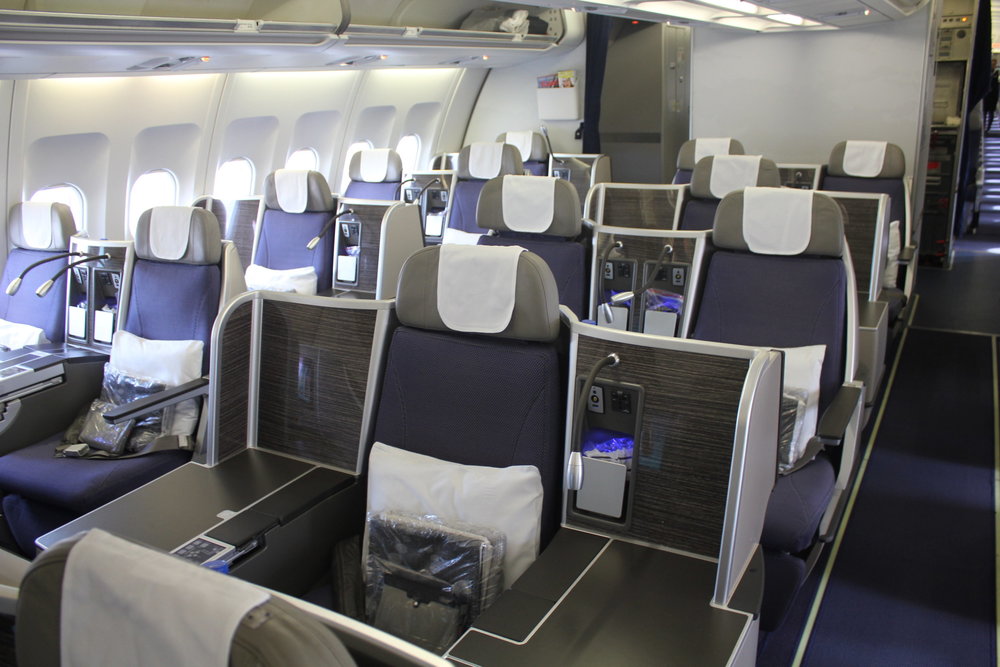
Mini-RTWs Are Tiring
There’s no two ways around it: flying around the world can get really tiring, really fast.
I’ve done three Mini-RTWs so far, and they’ve all been booked in the eastbound direction, bringing me to Europe or Africa first before heading towards Asia. Since the vast majority of eastbound transatlantic flights are overnight and relatively short in duration (think 7-9 hours), it’s almost impossible to get a proper night’s rest on these flights, even if you have a lie-flat seat in business class.
You’ll arrive in the Old World running on low batteries, but you’ll still have the whole day ahead of you. Okay, a coffee or two will carry you until the end of the day, when you can start nursing that awkward six-hour jet lag.
The true struggle begins when you fly from Europe to Asia. If you’re lucky with the flight availability, you’ll have one nice and long flight in a relatively comfortable lie-flat seat, like Swiss business class from Zurich to Hong Kong.
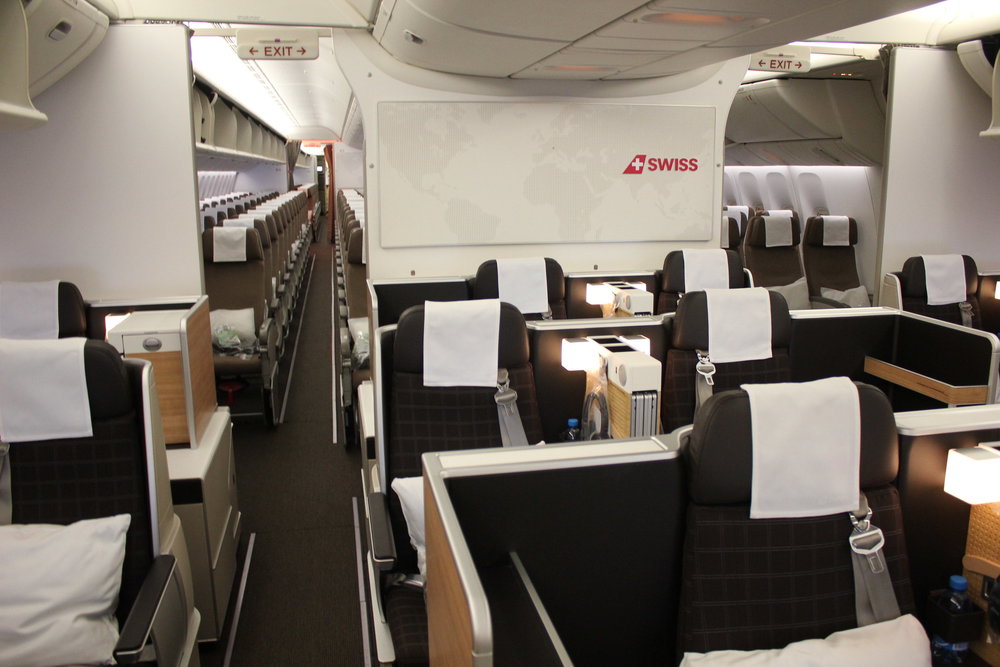
If, on the other hand, you had to stitch together a series of flights in order to make the trip happen, that’s where the hours and days start to blend into each other. A five-hour flight here, a 10-hour layover there, and on and on until you get to your final destination.
Even if you’re in business class, it gets exhausting, and you find yourself wondering how many more welcome champagnes you must drink and how many more flimsy warm towels you must unfurl before finally arriving at a proper shower and comfortable bed to sleep in.
But hey, it’s all part of the journey, right? And once you do arrive at your destination, at least you’ll be able to take it easy for a few days and recover from the jet lag…

…unless you’ve gone the extra mile and scheduled yourself a 24-hour layover or two!
A simple Aeroplan Mini-RTW can already be quite exhausting, but the 24-hour layovers are a whole different ball game.
On paper, the ability to add up to 10+ long layovers on a single trip might sound very appealing, but in practice, the small matter of your circadian rhythms being thrown into disarray can certainly cause the lustre to fade somewhat.
In any case, long layovers or not, the Aeroplan Mini-RTW is often a physical challenge. Even if you’re travelling in the fancy seats, spending so much time in the air takes a toll on your body, and it can often take one or two days of awkward sleep schedules when you’re on the ground to recover.
Mini-RTWs Can Be Logistically Challenging
Not only can Mini-RTW trips be challenging to plan and trying on the body, but the unorthodox nature of the trip also presents a host of logistical challenges that you wouldn’t otherwise encounter on a regular trip.
For example, my recent round-the-world trip brought me to Accra, Istanbul, Perth, Auckland, Beijing, and the Micronesian islands. In the middle of February, that means I’d be alternating between a balmy 27˚C, a chilly 10˚C, a sweltering 33˚C, a freezing 0˚C, and a satisfying 30˚C, all in one trip.
Packing my bags was certainly a challenge, especially when I needed to stuff my bulky winter clothes into my carry-on during the southern summer. And you can imagine my frustration when I checked my bag all the way through from Accra to Perth, not realizing that I’d need a jacket during my 18-hour layover in Istanbul. Suffice to say I was a shivering wreck during the free Istanbul city tour…

Also consider another logistical challenge: many travellers are in the habit of buying snacks, trinkets, and souvenirs to bring home and share with friends and co-workers. Best of luck with that if you’re on a Mini-RTW: every additional item you consider buying will add to the burden you must lug around for the remainder of the trip.
After a few trips around the world, I’ve generally decided that I’m better off bringing only the memories of a place with me, and so I rarely buy physical souvenirs anymore.
For example, on my most recent trip, I would’ve loved to bring a few jars of scrumptious Ghanaian green chilli sauce with me home, but they’d also slow me down significantly when I was doing the Island Hopper – and so I passed on the opportunity.

The biggest conundrum, though, might just be the question of whether to have any checked baggage at all, or to travel carry-on only. Whenever you check bags, there’s always a small risk that your bags might be delayed or lost, and with so many flights lined up on a Mini-RTW, that risk can be amplified significantly.
Moreover, if a bag does get lost somewhere along the way, it can often take days for the airline to get it back to you at your destination. And what if you’re already scheduled to fly out to your next stopover point by that time? The situation can get very messy, very quickly.
No doubt having travel insurance is one way to protect against this risk – the TD Aeroplan and CIBC Aerogold for Business credit cards will both cover you on an Aeroplan Mini-RTW, as long as you charge the taxes and fees to the card.

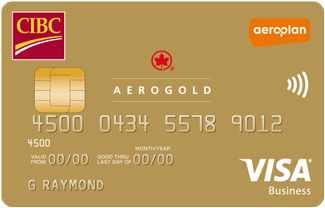
Nevertheless, it can still be a stressful experience at the baggage carousel, waiting for your checked bags to successfully make it through the three long-haul flights you just took, knowing that you’ll be in a real pickle if they somehow fail to show up.
So Aeroplan Mini-RTWs are challenging to put together, they’ll push your limits physically, and they’ll also give you a logistical headache for good measure. BUT…
Mini-RTWs Are Unbelievably Rewarding
And that’s why we continue to fly them, isn’t it?
Pick any three places around the world that tickle your fancy, and it’s likely you’ll be able to string them together in a single Mini-RTW trip of some form, and you’ll be able to earn the required Aeroplan miles with a credit card application or two.
For people who love travel, that’s a tremendously powerful deal, and it’s safe to say that the day the Mini-RTW disappears, if it ever comes, will be a sombre one for the community.
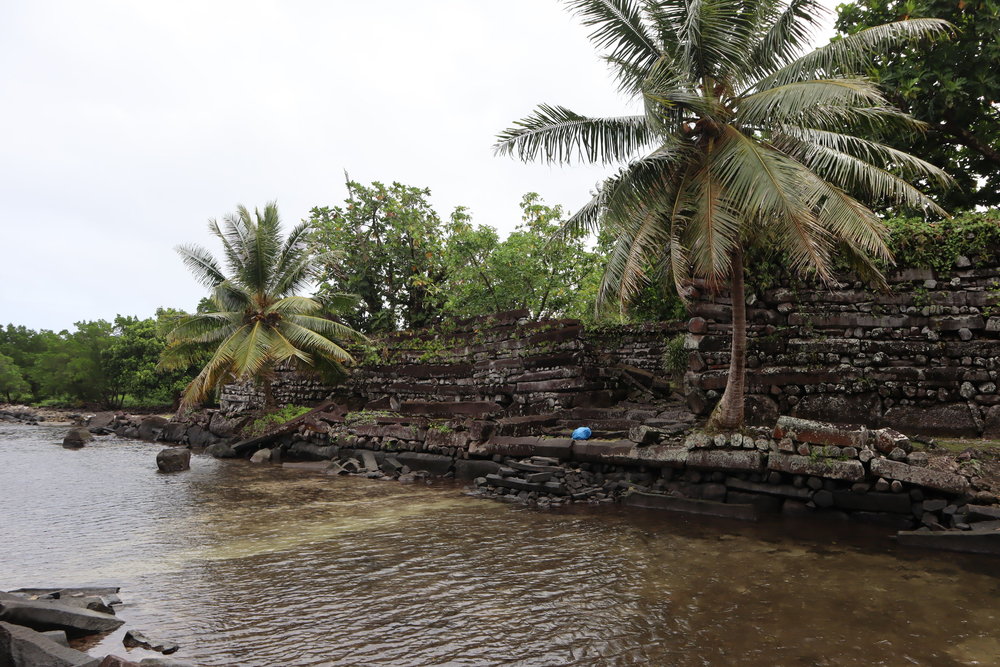
For me, Aeroplan Mini-RTWs (and similar trips) are almost supposed to be a challenge to pull off. It’s incredibly rewarding in terms of how many places you get to visit, but it also makes you work for that reward, which makes the trip all the more satisfying when you complete it.
It’s by design an unconventional way to travel – if it were easy to book and to execute, then everyone would be doing it and Aeroplan would’ve long shut it down. Indeed, I don’t view Mini-RTWs as the right tool for booking a “easy” relaxing trips. Instead, it’s a tool best suited for helping eager travellers see as much of the world as possible in one go, and to that end, a little bit of advance planning, jet lag, and mid-trip conundrums are trivial matters to deal with.
If you share that perspective, then it’s time to take swift action on your next big round-the-world redemption – the countdown to June 2020 is very much on! 😉
Conclusion
At times I’ve been guilty of describing the Aeroplan Mini-RTW as “the most insanely valuable way to redeem your points” (or words to that effect) without mentioning the challenges that goes along with it: the meticulous planning in advance, the laborious nature of the long journeys, and the logistical headaches that rear their ugly heads. But in spite of all that, the Mini-RTW remains one of my favourite ways to travel, in no small part thanks to the incredible volume of new travel experiences around the world that it affords.
I’d love to hear your thoughts as well. If you’re hesitant about embarking on an Aeroplan Mini-RTW, what are your mainly concerned about? And if you’ve done a Mini-RTW in the past, what challenges did you encounter along the way, and was it worthwhile in the end?

















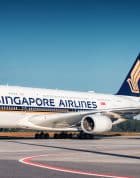


Hey Ricky,
For Aeroplan tickets, what are we as customers entitled to if there was a delay that causes us to miss the next leg of our flight? What about scenarios when an Aeroplan leg causes us to miss a segment of a flight that we purchased separately from Aeroplan?
Example:
YYZ – JFK (Aeroplan)
JFK – AMS (Aeroplan
AMS – CDG (British Airlines fare)
AMS – IST (Aeroplan
Is there any recourse in this case?
There’s no obligation on the airline to compensate you if you were on separate bookings, although it’s still worth asking. This is more the realm of travel insurance for getting your non-refundable costs recouped in the event of a flight delay.
Booked 2 pax on Eva J 1 day before departure and ANA F 2 weeks before depature. I’ve never booked far in advance, always last minute, and have been fortunate to find availability on many of the worlds best products.
I absolutely love MINI-RTW. It’s always a challenge to book this for a large family, but I’m always up for the challenge. I tend to not use my points for anything within NA, unless it’s a last minute decision or that buying the ticket is way too costly. The last one I did was YYZ-ORD-TPE-ICN-SYD-AKL-SFO-YYZ. Curious as to see what the best Mini-RTW in first class would look like.
I’ll write a blog post about optimal Aeroplan First Class awards soon.
I recently done my 1st M-RTW (yyz-ord-waw-ist-cgk-sin-bkk,color:magenta,bkk-hyd-vtz-del-mxp-zrh-lis-yyz) solo, I faced the same challenge of packing for different weathers (Dec-Jan) with in a backpack (yes, i only carried back with 2 pairs and laptop and toiletry) and wore two layers on me. This really gave me tough time during walking tours and public transport during rush hour.
Next challenge was the accommadation as most of the lounges in Europe are closed by 10pm and after hectic day trip during the layover, you have to either sleep over in chairs or take airport hotel for hefty price (unfortunately i dont have have many points for free nights).
I cursed myself when i slept on the floor in Milan and ended up booking airport hotel (sheraton) in Zurich for $200 for few hours as most of my departing flights are early in the morning to next destination.
In the end, this did not stopped my spirit, but will certainly plan for my 2nd one accordingly and this time i am planning with family of 3 which might be troublesome to find the award flights (hope i can get 3 award seats as my trip dates in dec-2019).
PS: if i would have read your island hopping bit earlier, i could have joined you as well..its once in a life time trips.. Ping me if you ever need wingmate/travelbuddy for solo trips.
Sounds like a hectic but very rewarding one! Hopefully your family will feel the same when the time comes 🙂
Mini-RTW and Significant Others, you nailed it. I went through a lot of up and down to get my other half to get on board even so she does not like the part when she has to call in to cancel the credit cards.
As for the Mini-RTW, I have done a couple including a separate mistake fare US $300 on United Island hopper US-154 going west bound. EWR-HNL-MAJ-KWA-KSA-PNI-TKK-GUM-MNL-PEK-ORD. On top of that, I paid extra couple of hundred dollars for the Economy Plus. I got the seat 7A & 7B and 7C was reserved for the Air Craft Mechanic who accompany us from MAJ-TKK. Never got off any of the Island but all in all it was a great trip and one less off my bucket list.
I have a Mini-RTW coming up in May, the challenges I had booking was not to arrive late in at night for the under 24-hour layout in order to avoid booking hotel. And also, thanks to you for avoiding the hefty fuel surcharges came handy.
Thank you for sharing all the Miles and Points and Hotel tricks so much so that I am planning 2 more of the Crazy Aeroplan Trips for 2020 before Air Canada takes over and that will the end of Mini-RTW
Love you site, looking forward to your next Toronto Miles & Points Meetup
I’ve looked into the possibility of routing via Island Hopper on those UA mistake fares before – amazing to hear that someone has actually done it! You definitely gotta go back and check out the islands though 😉
By the way, there is no blog anywhere that is going to give readers in Canada better information than the “ Prince of Travel “
I have to admit that I tease Ricky the odd time, but Man O Man, I get more from this blog than anywhere else.
Keep it up , Prince of Travel “
By the way, there is no blog anywhere that is going to give readers in Canada better information than the “ Prince of Travel “
I have to admit that I tease Ricky the odd time, but Man O Man, I get more from this blog than anywhere else.
Keep it up , Prince of Travel “
By the way, there is no blog anywhere that is going to give readers in Canada better information than the “ Prince of Travel “
I have to admit that I tease Ricky the odd time, but Man O Man, I get more from this blog than anywhere else.
Keep it up , Prince of Travel “
You’re too kind John. Thanks for reading and following as always.
Many people complain about Aeoplan and how it is hard to book rewards.
However, at this time , Aeroplan is still the go to program to book an around the world trip.
If plan members follow the rules and book fairly far out and have a little flexibility then anyone can get a pretty satisfying redemption.
I would recommend everyone to book this type of trip as soon as possible.
I’m oh so close to having enough points for my first mRTW w/ my partner and I’m going to start looking at dates for next spring/summer. However, instead of doing something as you outlined that can be very exhausting, we’ll be keeping it localized to jumping around different places in Europe. That way we’ll mostly stay in the same time zone. I know that doesn’t maximize the mRTW, but I think it’ll be the best way to utilize these points before changes happen to AP.
Yes, that’s one of the ways to reduce the exhaustion effects: by staying in the same time zone. I like doing three stops in South America for the same reason.
Your recent RTW was crazy, but only something I can dream of now. I have one coming up this summer with my family of 4 (business), talking me to SFO (3 hours of Polaris lounge), HKG, TPE (20 hours), SIN (8hours), MLE, IST (12 hours), and CDG. Paying a hefty fine to come home directly from CDG, but worth it I guess to cut down on the transfers. Continue to feed our dreams!